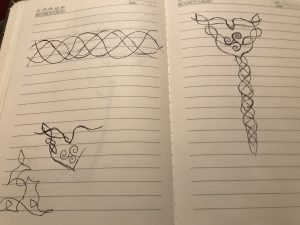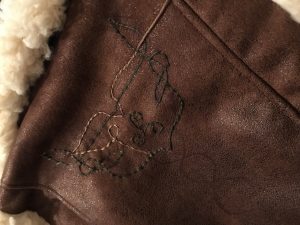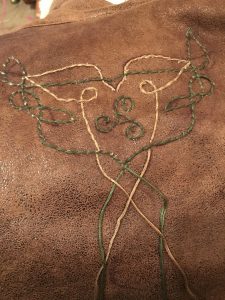This week, organizational work took up most of my time and it proved to be very productive work. I was able to connect with multiple different fiber artists in the area and located a wheel spinning and beginning weaving class that I’ve added to my list of “field study” work. I was lucky enough to meet several knowledgable women at the Arbutus Folk School in downtown Olympia who were more than happy to provide me with their emails in case I should have any questions regarding the practice and history of fiber arts. I also reached out to Olympic Yarn and Fiber Mill in Montesano and received a very positive response – I’ll be paying a visit to the mill and the 20 acre alpaca farm that it sits on at the end of the month.
Another focus of mine was to make sure that I had some sense of direction for the following weeks. I was feeling a bit overwhelmed by just how large of an area I am choosing to cover, so I wanted to have a way to ensure that I was following some kind of common thread during any given week. Because of this, I created a week-by-week syllabus for myself detailing the subject that I will be focusing on. I do expect myself to get distracted and to follow different threads when the peak my interest however, I think having a solid plan to keep in the back of my mind and to fall back on will be helpful for me during the course of this quarter.
I also used this week to begin delving into some podcasts that seemed interesting to me. I started by listening to an interview with Robin Balser, the owner and founder of Vinokilo – a pop up shop that sells used clothes by the kilo and serves wine to visitors during the shopping process. Vinokilo’s products are pulled out of trash that is set to be sent to African countries and are then redesigned into one of a kind pieces and sold at their pop-up events. Balser argues that when Western countries dump their used goods into countries like Ghana as “donations,” instead of helping people become clothed, it destroys the economy because small businesses and craftsmen have no market anymore. So, instead of creating more textile products to be dumped overseas, the business just recycles and reuses what is already there. Because the product is made at such a low price, the retail price is accessible to people of all walks of life – another of Vinokilo’s values.

The effect of American and European waste on African economies is not one that I had considered before, but after looking into the costs associated with surviving as an artisan and understanding how much waste is resulting from modern-day disposable fashion, it does seem like a very plausible situation. I’m interested in finding some numbers to back that claim though, so my research in modern day fashion next week with be further dedicated to looking at issues of waste and where it ends up.
Another significant realization that I came to this week is just how separate the world of handicrafts is from every day goods. It’s becoming more and more apparent to me that in today’s society, local crafts are considered a luxury item while what we wear is just something we get from overseas. There isn’t much thought put into the durability and quality of products and how it relates to sustainability and labor practices because we were never aware of how they have been made in the past, much less how they are made now. I’m very excited to visit Olympic Yarn and Fiber because I believe it will help me understand how things can still be made locally in a very “crafty” way while still using machinery that doesn’t require hours of tedious work and pricing that is completely unaffordable.
Overall, this week held some pretty significant discoveries regarding the way textiles come into this world and what happens to them when they leave our sphere of awareness. I’m looking forward to continuing to shed some light on that area and to ask the question of whether or not mass producing any kind of textile at all is necessary when we already have so much floating around.



